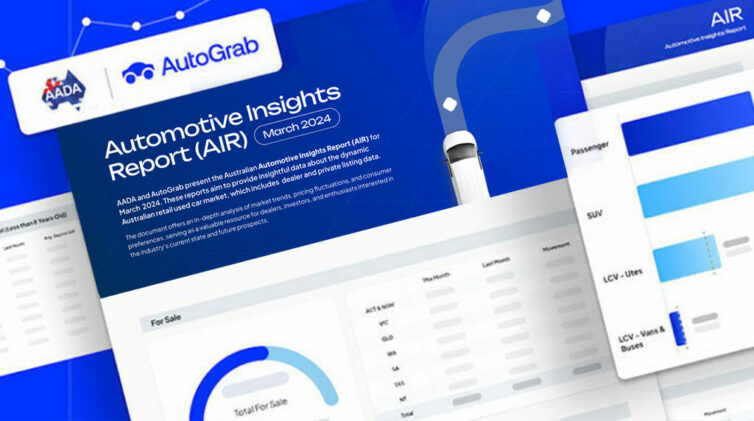They will still sell vehicles; with delivery, finance and service still at the dealership. However, many interactions will not be onsite or during the current ‘normal operating hours’.
Sales facilities will likely not need to be as big since some of the transactions will be at the customer’s premise and not the dealership.
There are many changes coming which will impact the retail motor industry. The dealerships that start planning for the future now with the flexibility to adapt to the changes as they arrive will survive and thrive.
They will make some mistakes along the way, but if they are proactive in adapting to the future those mistakes should pale against their success.
We have outlined in this article many of the conditions that will affect the motor industry.
Whilst there may be general directions, the ultimate solutions taken by each dealership group to prepare for the changes will vary based on circumstances, geography and brand. But the key is to be proactive about preparing for these changes and not reactive after the event.
Motor Industry Services (MIS) has been carefully watching the shifts in the automotive industry and has been assisting dealerships to understand and navigate the dramatically changing automotive environment.
Dealer groups are looking at and placing themselves to thrive in a new automotive environment and, when you look forward for the next six years, there are many factors that will affect how a dealership operates.
From the recurring themes of these discussions with dealers we have prepared a checklist.
At KPMG MIS we see the key issues that need to be considered are: finance and insurance; the adoption of electric vehicles; the internet of things; autonomous vehicles, mobility and increased delivery volumes; changing vehicle ownership and purchase considerations and the role of the consumer.

Finance and Insurance (ASIC, APRA, and the Hayne Royal Commission)
Automotive dealers have already seen an effect from changes introduced previously – such as the virtual elimination of GAP insurance, limiting of insurance commissions and the removal of flex in finance.
Reviewing how the dealer body has responded to this provides great insight as to how we may react to the other changes mentioned in the checklist.
While it has only been a few months, many dealers have seen their finance business reduce post the November 2018 changes.
However, there are a number of dealers who have maintained or increased their finance department’s performance. What is the key learning from this? The dealers who prepared carefully, thoughtfully, and strategically for the changes have generally come through it quite well.
The dealerships who waited to see what happened, and then possibly react, have seen their finance business drop.
There is one certainty in the future for finance and insurance; there will be more changes.
In the wake of the royal commission. Particularly when you consider one of the recommendations leads to dealers coming under the NCCP which will add costs and complexity to F&I.
What does the future of F&I look like in your business? What are the alternative operating models?
Will the Business Manager role be required or can it be merged with the salesperson or manager?
Can they do the transaction as an interface with the financier who holds the Credit Licence (ACL)?
Should your dealership get an ACL and become the financier?
It is best to prepare for those changes and start planning now!

Electric Vehicles
A lot has been said about electric vehicles – but let’s remember in Australia they accounted for less than one per cent of vehicles sold last year – and represent even less in a carparc that has an average age of more than 10 years.
Regardless of the seemingly ‘slow’ start – EV’s are on their way.
More models are being offered and in the pipeline; overseas governments are providing incentives to increase sales, which will increase economies of scale for manufacturers.
In parts of the world, non-electric vehicles are being banned from roads on certain days due to smog, increasing the purchase of EVs and hybrids.
Regardless of consumer preferences, EV sales will rise – we are an import only market, countries where vehicles are manufactured are implementing policies and incentives to increase sales of EVs, and a number of OEMs have already indicated when they will introduce their last vehicles with combustion engines.
So, they are coming; and this will have an effect on servicing requirements and capacity, longer periods between servicing (and potential contact points with customers); less parts sales per vehicle due to less moving parts.
Potential separation in the sales process of vehicles and batteries, and how the vehicles will be sold. Petrol is essential to vehicles with combustion engines, but electricity is critical for EVs. Will electricity companies get involved in the sale process, like telecommunication companies did with mobile phones?
Will you buy the cars in one transaction and have a subscription/lease for batteries? Consider the impact that EVs will have on your staffing requirements, service capacities, the sale process, and your customer contact and retention.
FIND OUT IF YOU ARE READY FOR THE FUTURE
Consider whether any of the following possibilities either are now or will in the future impact the operation of your business.
Review these points and tick the ones you believe will affect your dealership by 2025:
- Recent changes to finance and insurance in the automotive space
- Impact of the Hayne royal commission on consumer access to loans
- Impact of future government legislation and regulations from recommendations from the royal commission.
- Growth of electric vehicles in the marketplace
- Impact of the internet and connectivity
- Advent of autonomous vehicles (and semi-autonomous vehicles)
- Increase in delivery requirements from ever-increasing e-commerce (e.g., amazon, uber eats, etc)
- Link between autonomous vehicles and delivery of internet (e-commerce) purchases – what will the delivery vehicles/robots look like?
- Mobility and ride-sharing companies
- Consumer requirements, including how they wish to interact with your dealership / group
- Vehicle ownership versus financing versus subscriptions
How many did you tick? We suspect you ticked them all.
The internet of things
This is only just getting started. We have Dealer Management Systems that now reside in the cloud rather than on an internal server; apps for valuing and test drives; better CRM capabilities (if we use them), and more to come.
And that is just in our business – the internet is affecting the consumer as well.
Now, more than 90 per cent of used vehicle leads come from the internet. People do their initial search for a new vehicle over the internet – we all know someone who negotiated their deal via text.
Things are changing, and we need to sell to the consumer why they want to interact with us, when they want to interact. How many enquiries come in after work hours and when do we respond?
And when they make an enquiry online, response speed is of the essence. A recent global KPMG survey showed that only 76 per cent of people wanted to physically go to a dealership to buy a vehicle.
Good news – that’s still a majority. But how do you connect with the 24 percent of people who don’t?
And as the global retail sector has already shown us, this number will only grow. If our dealerships don’t find a way to connect with ’the 24 per cent’, someone else will.
The internet also affects dealership services, such as online service booking – having an effective online booking service can reduce the amount of phone calls into a dealership at busy times, with obvious flow on effects in the service department.
Finally, the internet and upcoming 5G networks are essential to the oncoming storm of autonomous vehicles.
The flow of data and information to and from vehicles will be immense. Where can the dealership be positioned in the different data flows? And how can they be monetized, if at all, for the benefit of the dealership? What will be the dealerships role in this area?
Autonomous vehicles, mobility and increased delivery volumes
While three separate factors, there are strong enough links between them to discuss them together.
However, let’s consider this; according to information analysed by Get Data Sheet by Fortune, cars spend 93 per cent of their time standing idle. This information on its own shows the opportunity to release hidden value in car ownership and usage.
Furthermore, research globally by KPMG suggests that due to mobility services, cost per mile of travel could reduce by up to 40 per cent!
Fully autonomous vehicles are still quite some distance into the future; if only because of regulatory issues and considerations such as who is responsible in an accident; the owner or the manufacturer for example.
But could autonomous vehicles/pods/robots that don’t carry humans be on the market by 2025?
Many firms, car companies and technology startups alike, are testing these at the moment.
Studies in the US have shown an increasing share of total miles driven in the US each year by delivery services, with an associated decline in share of total miles by people visiting shopping malls.
Whilst this data is not readily available for Australia, we will be no different. In my household this week, there were three deliveries to our door. What will happen when my kids are old enough to order on my credit card?
We can therefore expect unmanned delivery vehicles to ’hit the market first’. These will likely be fleet vehicles, likely to be electric, and could also have an impact on our service departments such as when they should be serviced.
- What would be the repurchase point for these units compared to current delivery vans?
- Will they be doing more miles and be on the road for a greater number of hours each day?
There are also suggestions from time to time that delivery trucks could be limited in inner city areas, with a swing therefore towards vans as well as the unmanned “vehicle drones”.
Mobility services will also affect the industry – sooner than autonomous vehicles. In fact, the first generation of mobility services are already here. The rise of Uber and other services will have a number of effects. Uber effectively puts more “taxis on the road”, and is doing one of two things:
- Putting more cars on the road – as people buy a new car to use for their Uber business, and/or
- Changing over cars faster as mileage increases.
These can have an impact on sales volumes, finance, insurance, and aftersales areas of the dealership.
Additionally, when not being used for passenger taxi services, these vehicles can be used for deliveries – blending the two concepts together in the one vehicle.
Vehicle ownership and purchase consideration
Currently in our industry most private sales are financed, but dealerships finance less than 40 percent – compared to over 80 percent in the US and UK.
This was expected to increase post November 2018, but what will occur next depends on any new legislation arising as a result of the Hayne royal commission.
Combine this with the fact that many experts believe that up to 50 per cent of people will not want to own a car by 2025. Therefore, as an industry, we can probably expect ‘fleet’ sales to rise with the increasing scale of new industries such as the ride-sharing and delivery industries.
Does your dealership/brand have good connections with these businesses? It’s not just the sales, but the servicing. And be wary of the introduction of specialist fleet servicing companies that may compete with dealerships; this is already happening in the US.
Let’s also not forget about the subscription industry. It is in its infancy around the world and in Australia – going through teething issues as companies test the concept – but at its heart the concept has legs.
Rather than just a lease, who wouldn’t want to pay a monthly subscription that:
- May have no fixed term (depending on the company)
- Includes insurance, registration, and servicing
- Allows you to change cars to suit, e.g., SUV to ute to sports car
- Gives you more flexibility in ownership and choice.
The consumer
Of all the issues that can affect our dealerships in 2025, without doubt the overriding factor is the CUSTOMER.
If we do not give them what they want, we will not receive their business.
Each customer, whether an individual, family, government, or business, has their own unique requirements and expectations. And if we don’t meet them, another dealership or business will.
Understanding our customers and interacting with them HOW they want to be interacted with is critical.
We spend time with lots of dealers in this country, and whilst most are trying to accommodate the customer, at times we still hear the old line of the “customer will do what we tell them”. Well they won’t – and if we don’t interact with our customers the way they want, they will exercise their right to go somewhere else.
Having the right customer culture, a good customer database and data-mining, regular contact schedule, ease of the customer dealing with you digitally – these are all key ingredients to running a successful dealership in 2025.
Ask yourself this – does your dealership, or group, really understand your customers, and do you treat them all like a member of the family (not an estranged family), and provide them excellent service that includes the “excitement factor” of going above and beyond.
Rohan Meyer is a senior manager at KPMG Motor Industry Services.
By Rohan Meyer


















 Read More: Related articles
Read More: Related articles

